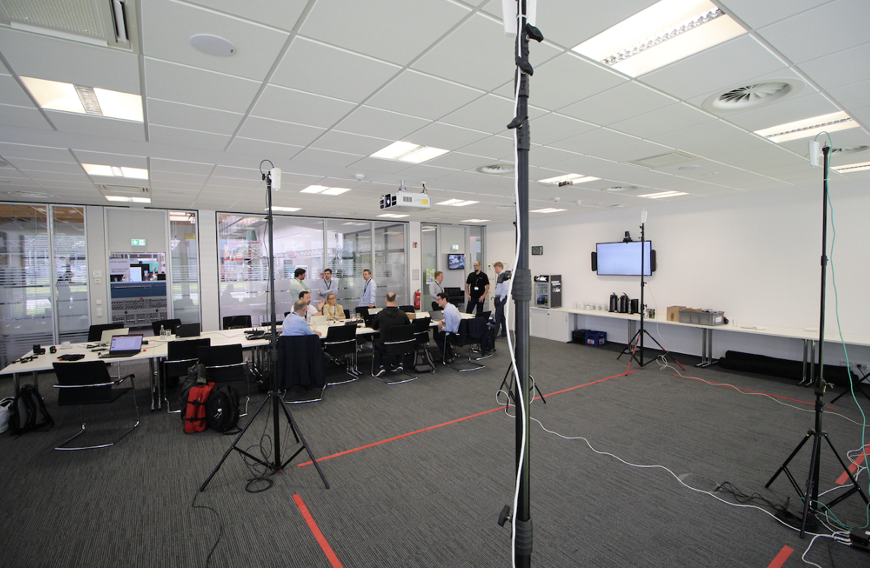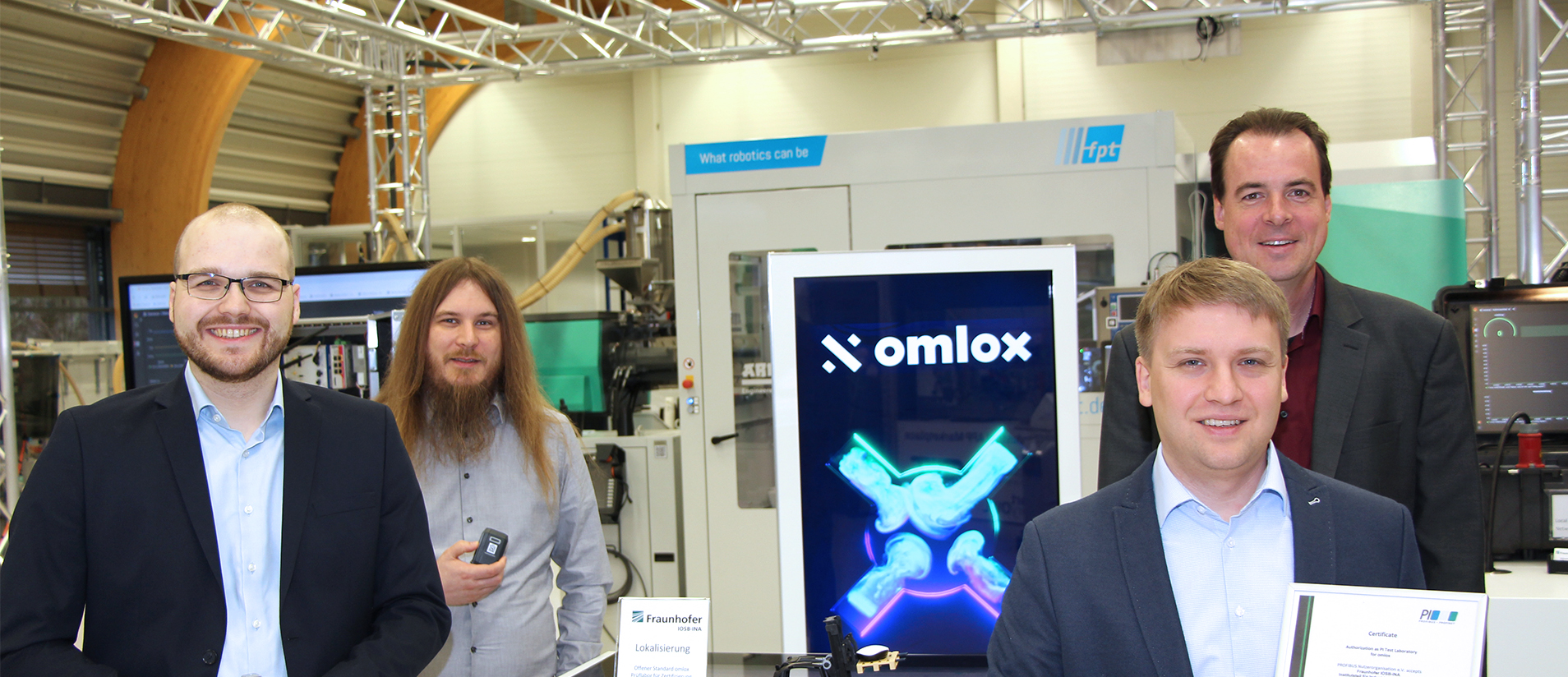Fraunhofer researches future standard for localization
The world's first omlox test laboratory was accredited at the Fraunhofer Institute in Lemgo in November 2023. This means that Lemgo meets all the technical and organizational requirements and has the expertise to test an omlox component for conformity to the standard. The accreditation was granted by the PROFIBUS user organization. Fraunhofer would like to use the future scientific findings of the test laboratory for the further technological development of the standard in order to sustainably strengthen Germany and Europe as technology locations.


"omlox" - For the first time, this standard enables the technology- and manufacturer-independent provision of localization information (www.omlox.com) in production environments. Various localization technologies such as ultra-wideband radio (UWB for short, which is widely used in localization systems due to its robustness), 5G, RFID, QR codes or GPS can be used together and with uniform interfaces in an omlox system. The standard also ensures that omlox satellites (components of the localization infrastructure in a building) can interact with omlox tags (devices that are localized via signals) regardless of the manufacturer. The technology standard is managed by the PROFIBUS Nutzerorganisation e.V. (PROFIBUS user organization).
Thanks to these features, omlox is regarded by experts as a pioneering localization standard with key functions for the ongoing digitalization of industry and logistics. Its broad range of applications addresses key challenges and creates future-oriented change prospects for companies. The focus is on several key areas of application that make a significant contribution to increasing efficiency and optimizing industrial processes:
1. tracking of products, tools, orders, vehicles and people: omlox not only enables the simple tracking of static resources such as products and tools, but also offers the possibility of localizing dynamic elements such as vehicles and people - in compliance with GDPR, of course. This creates transparency along the entire value chain, facilitates the management of inventory and promotes the safety of employees.
2. automatic booking and documentation of process progress: The integration of omlox into production and logistics processes enables efficient automatic booking and documentation of process progress. This is particularly important in times of a digitizing world of work, as companies not only reduce paper usage and costs, but also gain accurate, timely insights into the progress of their processes.
3. location-based information and control: The omlox Hub's consolidation of position data enables companies to precisely control machines and perform effective maintenance in industrial environments. This helps to optimize production processes, minimize downtime and increase overall efficiency.
4. autonomous transportation: In the era of Industry 4.0, omlox plays a key role in the implementation of autonomous transportation solutions. The precise localization and coordination of vehicles and robots enables seamless integration into internal plant traffic. This leads to optimized material flows, reduced resource consumption and more efficient production processes overall.
5. safety-related applications: A particular focus of omlox is on safety-related applications, especially in the area of lone worker protection in the process industry. The precise localization of employees enables companies to react quickly to potential hazards and increase the safety of the working environment.
Certification of omlox components
The function and interfaces of a manufacturer-independent technology such as omlox are described by standards. To ensure that the components (hardware and software) from different manufacturers work together in a system, the components must be implemented exactly in accordance with the standards. If this is the case, this is referred to as conformity. This must be checked in order to ensure high system quality and usability for users. This conformity is now being tested and confirmed in the world's first test laboratory so that components can receive omlox certification.
Research in the field of localization at Fraunhofer in Lemgo
The Fraunhofer experts are also involved in the active further development of the standard in the omlox committees:
- Participation in the development of test specifications
- Carrying out interoperability tests
- Analysis of positioning accuracy
- Implementation and analysis of use cases
New approaches are also being researched, such as the implementation of applications with functional safety requirements or the localization of people and assets using video systems and sensor ceilings.
omlox-partner-network
The omlox standard is being driven forward by companies and associations such as Trumpf, Flowcate and SynchronicIT as well as the PROFIBUS user organization. In addition, companies such as AWS (global cloud computing provider), T-Systems (cross-vendor digital service provider), Sick AG (provider of sensor-based solutions), Pepperl+Fuchs and Siemens AG are also involved. The Fraunhofer Institute in Lemgo is looking forward to making a contribution as a partner with the new laboratory.
What do the responsible scientists at Fraunhofer say?
omlox laboratory manager Harry Fast is delighted with the successful accreditation and the tasks ahead: "We are convinced that a standard like omlox for localization in an industrial context is long overdue. With the test laboratory, we want to play our part in ensuring that the conditions for a functioning, interoperable standard are in place and thus create the confidence for broad market penetration." Deputy laboratory manager Florian Hufen adds: "The further development of the omlox standard, the test environments and the applications is in full swing. At Fraunhofer, we are researching new testing and interface concepts, among other things. In our SmartFactoryOWL, we also test components and entire systems in real-life applications." Dr. Holger Flatt is head of the division to which the new laboratory belongs at Fraunhofer in Lemgo: "Localization is one of the technical solutions that still promises a lot of efficiency gains in production - but this treasure can only be exploited if the systems can be interoperably integrated into Industry 4.0 environments. Here we have ideas on how to achieve this!"
 Industrial Automation branch INA
Industrial Automation branch INA 